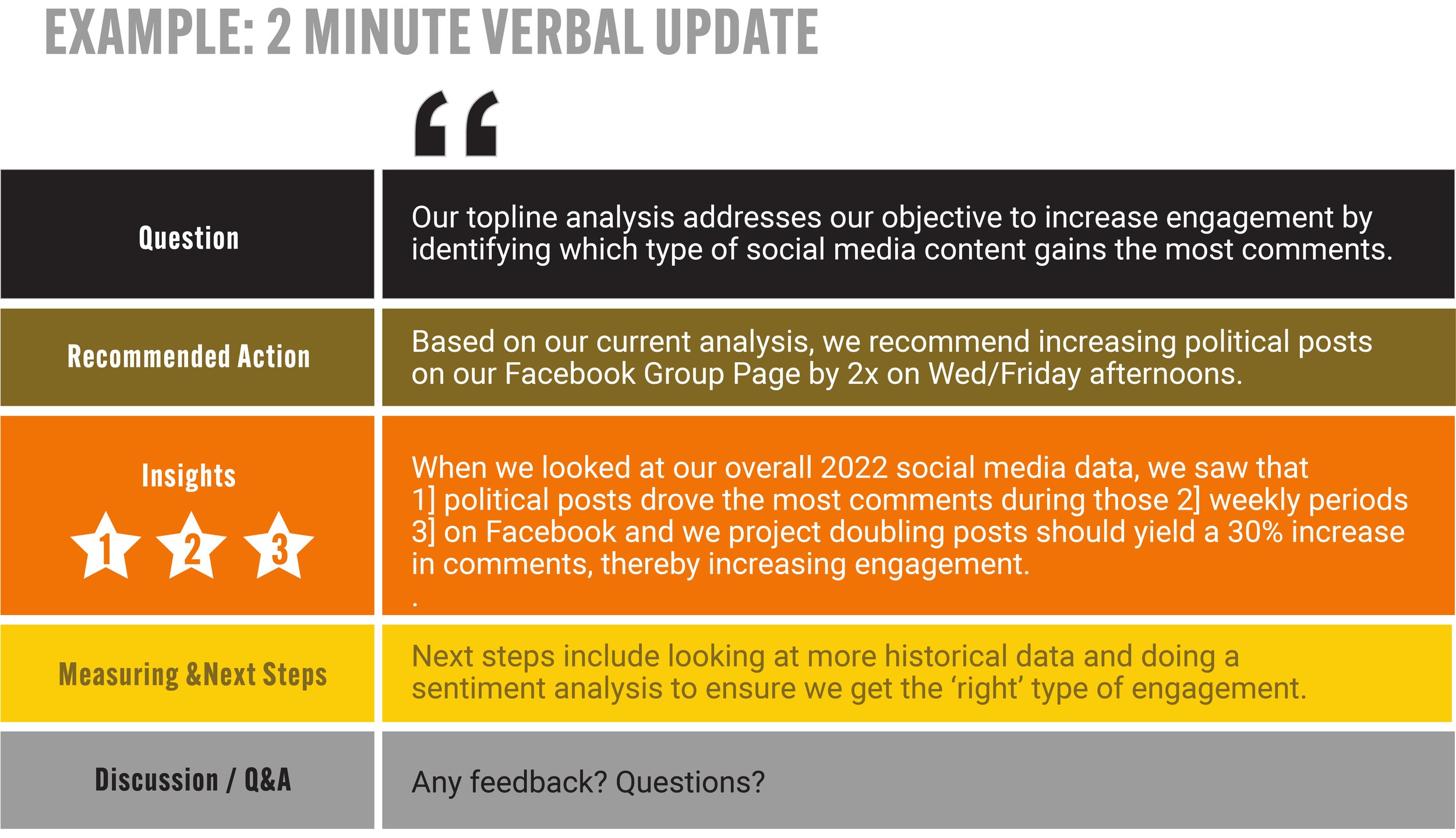Frmwrk 02: Analyzing Data for Insights
As a Data-Storyteller one of the most important things I’ve learned is don’t answer long term questions with short term data…think Facebook missing the short video obsession…
or forget to just stretch outside the nicely defined space you’ve carved out…think DoorDash overtakes GrubHub.
Ultimately, data analysis for insights is a problem-solving tool.
FRMWRK OBJECTIVE:
DETECT THE SIGNAL IN THE NOISE, FAST AND SCRAPPY.
More specifically, you can analyze data to understand, improve ops, or establish/evaluate budgeting…plus there’s, obviously, many more applications so let’s get into it.
5 STEPS FRAMEWORK
In this post, I’ll only be unpacking STEPS 1, 4, and 5.
STEP 1: FRAME A QUESTION + IDENTIFY THE DATA
Why highlight the question so significantly?
The way you frame your question not only contextually positions your problem it also belies assumptions/preconceptions, which then determine how you’ll conduct your analysis. This first step is a big deal.
Checking-in to identify biases is huge regarding the potency of this first step.
Here’s another framework great for bringing biased thinking out into the light.
As for formulating a question you don’t have the data for? Don’t…or be ready to go out and get it.
Do think about how broad or narrow you want your question to be, there’s no right or wrong scope, but the way you frame your question impacts your datasets, insights, and recommendations.
Here’s an example problem…
Here’s some examples questions…
Again, to be effective, the only way this works is if you have good data regarding the question in order to assess your recommended action after trialing it.
More on question framing here and more on data sets below which should include both external and internal perspectives around the problem. Tap the free ones to get started.
STEP 4: Extract Insights
Your insight is the payoff…a non-obvious takeaway that, when actionized, improves your business and is always organized as the following 3 declaratives:
STEP 5: Communicate findings
Your analysis will sit on the shelf if you can’t communicate it clearly and compellingly. Here’s where you’re moving from analyst to storyteller and the visuals are really crucial. This step is all about curation for clarity.
Crystalize the info!
Can it be understood in 5 secs or less?
And the Insights from Data Analysis Framework is so similar to the Problem Solving Framework [hypothesis mode]:
start with the question you’re trying to answer!
feature the bottom line first…the most salient response to the question plus the recommended actions.
include prioritized recommendation credibility points…not all!
wrap it up with some next steps and how you’ll measure success.
save time for open discussion…Q&A!
And whether it’s an email, a conversation, or a presentation, you’ll want to run through these 5 dimensions, in this order.
CONCLUSION
So whether your quest is to improve your organization, in general, or solve a very specific problem, applying the rigorous Analyzing Data for Insights 5 Step Framework will help you unearth valuable, actionable insights plus save you from timely/costly mistakes.
If you seek an even more basic approach to Problem Solving…applicable to any project at virtually any point…check out this framework.
#Process #DataAnalysis #ProblemSolving #DataComms #DataReporting #Insights
I learned this Data Analysis for Insights Framework from Sarah Evangeline Norman while earning my Digital Strategist Certification from the executive business education platform: Section founded by Scott Galloway.













